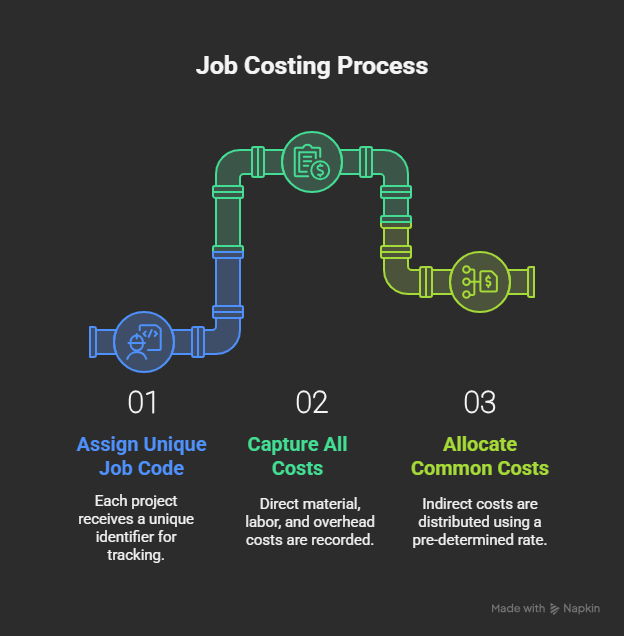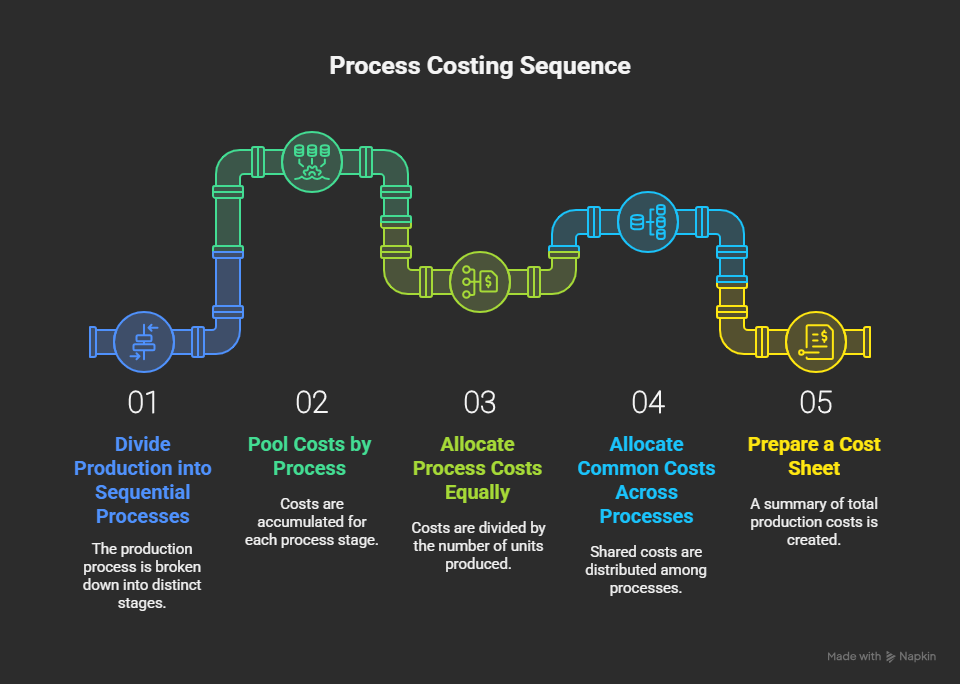Costing System
1. Illustrative Example: Government Hospital Tender
- Context: You work for a government hospital inviting tenders for two widely used tablets.
-
Products:
-
Tablet A (Adult):
- Contains a few chemicals with higher dosages.
-
Tablet B (Children):
- Shares three chemicals with Tablet A, plus two different ones.
- Dosages are smaller.
-
Tablet A (Adult):
-
Observation:
Two pharmaceutical firms submit substantially different price quotes. -
Key Insight:
Difference arises because each firm uses a different costing system—specifically, they allocate common costs differently in a multi‑product environment.
2. Designing a Costing System: Three‑Step Process
-
Establish the Cost Object or Cost Center
- A cost object (or cost head) is the lowest level at which cost data are collected.
- Examples: Material, salary, repairs, freight, travel expenses, customers, dealers.
- Cost objects are grouped into cost centers (e.g., Production Cost Center, Purchase Cost Center).
- A cost object (or cost head) is the lowest level at which cost data are collected.
-
Cost Accumulation
- Create records to capture costs as they occur.
- Material requisition slips: Track materials issued to jobs/processes.
- Employee sheets / Machine log books: Log labor and machine usage per job.
- Costs are recorded under their respective cost objects.
- Create records to capture costs as they occur.
-
Cost Assignment
- Direct costs: Traced straight to the product or service (e.g., raw materials).
-
Common costs: Must be allocated across multiple products.
- Examples: Depreciation of factory building, managers’ salaries.
- Allocation bases include output quantity, material cost, labor hours, machine hours.
- Choice of allocation base → different product costs → different tender quotes.
3. Common vs. Exclusive Costs
-
Common Costs:
- Occur when several products share machines or resources.
- Can represent 20 %–80 % of total costs.
- Higher for high‑value‑added products on shared resources.
-
Exclusive Costs:
- When each product has its dedicated production facility.
- Result in fewer common costs to allocate.
4. Activity‑Based Costing (ABC)
- Developed to address arbitrary allocation of common costs.
-
Key Features:
- Identifies activities as cost objects.
- Allocates overhead based on actual drivers (e.g., number of set‑ups, inspection hours).
-
Trend:
- Increasing adoption as firms seek more accurate product costing.
5. Major Costing Systems
5.1 Job Costing
- When to Use: Custom orders or services.
-
Examples:
- IT projects (e.g., Infosys executes per client order).
- Construction contracts (e.g., Gammon India).
- Automobile service stations (each vehicle service → one “job”).
-
Process:
- Assign a unique job code.
- Capture all material, labor, and overhead under that code.
- Allocate common costs on job completion using a pre‑determined rate.
5.2 Process Costing
- When to Use: Mass production of identical units.
-
Examples:
- Manufacturing (sugar, cement, fertilizer).
- Service providers with uniform services (banking, insurance, telecom).
-
Process:
- Divide production into sequential processes (each → cost center).
- Pool material, labor, and overhead costs by process.
- Allocate process costs equally to all units passing through.
- Allocate common costs across processes as needed.
- Prepare a cost sheet showing material cost + cost per process.



No Comments